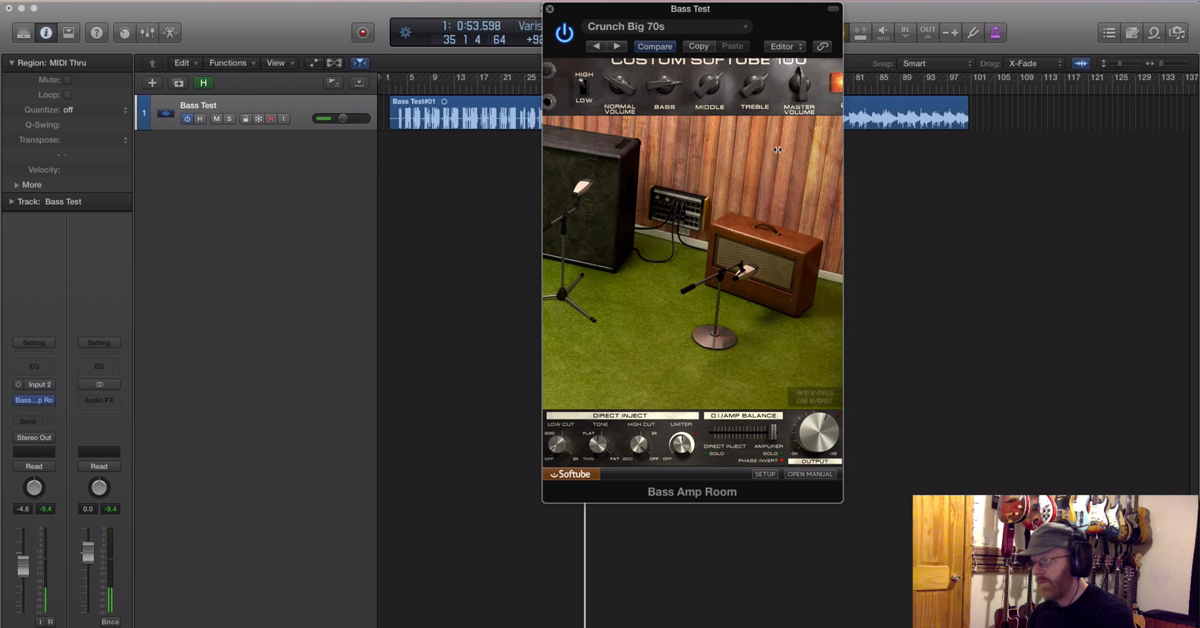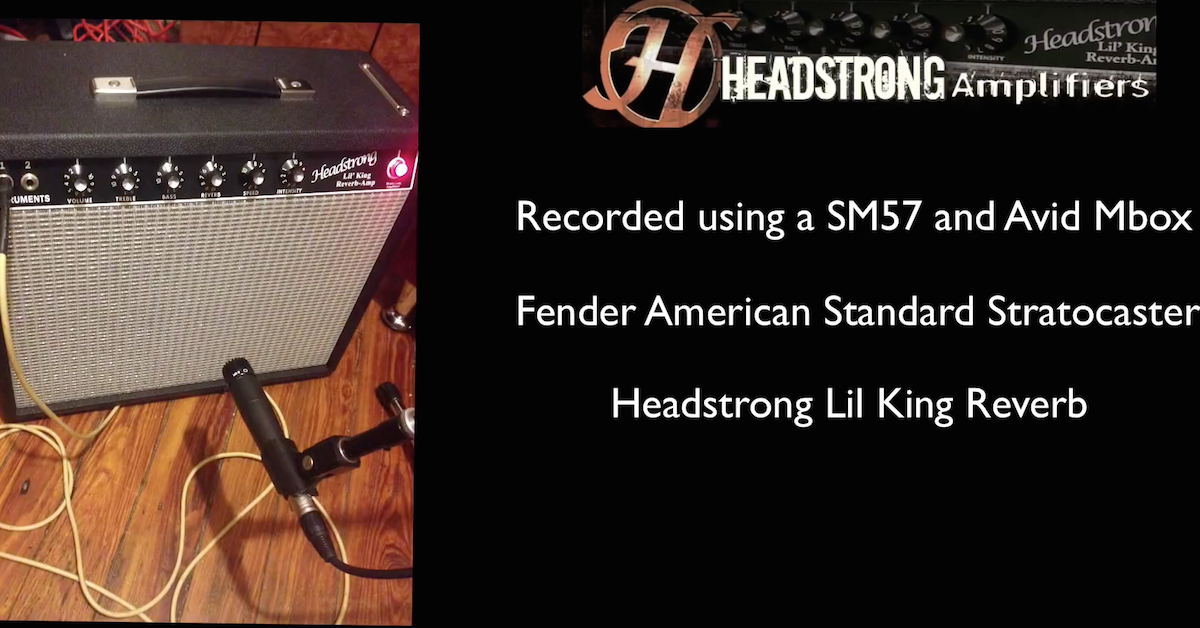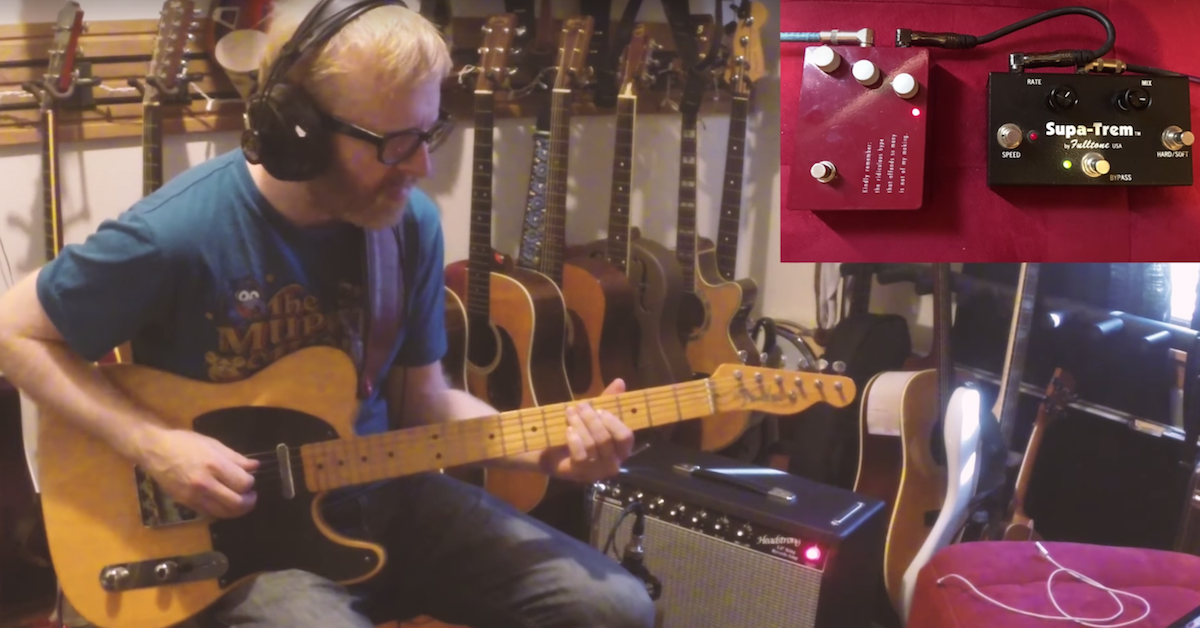Plugin Profile: UAD Fender ’55 Tweed Deluxe
Today’s plug-in profile is all about the Fender ’55 Tweed Deluxe amplifier, which has been meticulously modeled and turned into a plug-in by the folks over at Universal Audio.
Before I show you the different settings and sounds, I’m going to record a guitar solo using a custom preset that I created with the plug-in.
[mix, recording guitar]
Alright. Right now, let’s show you around the plug-in. I’m going to loop this selection here so you will probably get tired of the guitar solo, I apologize in advance, and I’m going to go to the factory default setting for the plug-in.
First up, we’ve got choice between line and normal signal level. Let’s take a listen.
[line versus normal signal level]
Okay, so clearly we have a little bit more gain with the normal signal level.
Next up, we have three different speaker types.
[adjusting speakers]
My personal favorite for lead is the JB120. It has a nice mid-range bite, but all of these have plenty of applications in which they would work wonderfully.
We have an off/on switch, so let’s hear the direct signal.
[DI signal]
Next up, we have a tone control.
[adjusting tone]
So although it says tone, it also to my ears behaves as a secondary gain control. We definitely have a lot more gain when we have the tone cranked, so if you’re going for a more clean tone, you probably want to dial back the tone.
Here it gets pretty interesting. We have instrument volume.
[adjusting instrument volume]
And you’ll notice we also have mic volume. Nothing is going to happen as I turn this knob up, because these controls are dependent on where we are connected input wise here.
So we have instrument and mic input. So let’s switch over from instrument to mic.
[switching between instrument and mic]
And this is where the plug-in gets really versatile. Let’s double click here, and now we are plugged into both instrument and mic. Let’s dial back a little bit.
[instrument and mix inputs, guitar playing]
As you can hear, when I crank both instrument and mic volume, we get a really in your face fuzz tone. So the tone blending options are seemingly limitless when you factor in that you’ve got instrument, mic, or both combined, and the sound that I ultimately decided on was in fact a blend of the two.
Alright, let’s move down here to the mic section. Obviously, we’ve got tons of control over here, but famous guitar sounds do not stop at the amplifier. So the plug-in does a great job of emulating how guitars have been recorded throughout history.
Let’s switch over to the mic input only, and I am going to mute this mic here. You have a choice between one or two or blending these microphones. I’m going to mute the second one and let’s take a listen to this right here.
Alright, we’ve got control over choosing which type of microphone. This is the classic SM57. My personal favorite choice for guitar amplifier.
[guitar with SM57]
A 421.
[guitar with 421]
Ribbon.
[guitar with Royer 121]
Another Ribbon.
[guitar with M160]
And a 67 condenser mic.
[guitar with U67]
The sheer amount of tonal blending options is pretty astounding. So we can also move these mics off axis, engage a high pass filter, pan, and blend.
So we’ve got one mic, two mic, let’s unmute this one. Let’s go with a 57 and let’s keep it on a ribbon microphone here, and get a blend of these two.
[blending mics]
And then over here, we have a master control, so if you really want to drive the microphones, but need to pull back on the output, you can do so.
Okay. So overall, I would say that they’ve done an incredible job of modeling this amplifier, and the thing that gives it that extra push is the ability to record it in ways that engineers have done throughout the decades.
So this is an extremely fun plug-in, I as a guitar player have always been very skeptical of amp simulator plug-ins, but I have to say, it’s a lot of fun to work with, and does a very convincing job. If you do not have access to a Fender Deluxe ’55 amplifier, as most guitar players probably don’t, I can’t strongly enough recommend this plug-in.
Again, this has been Ian Vargo with The Pro Audio Files. If you have any questions, get in touch. Thanks.






